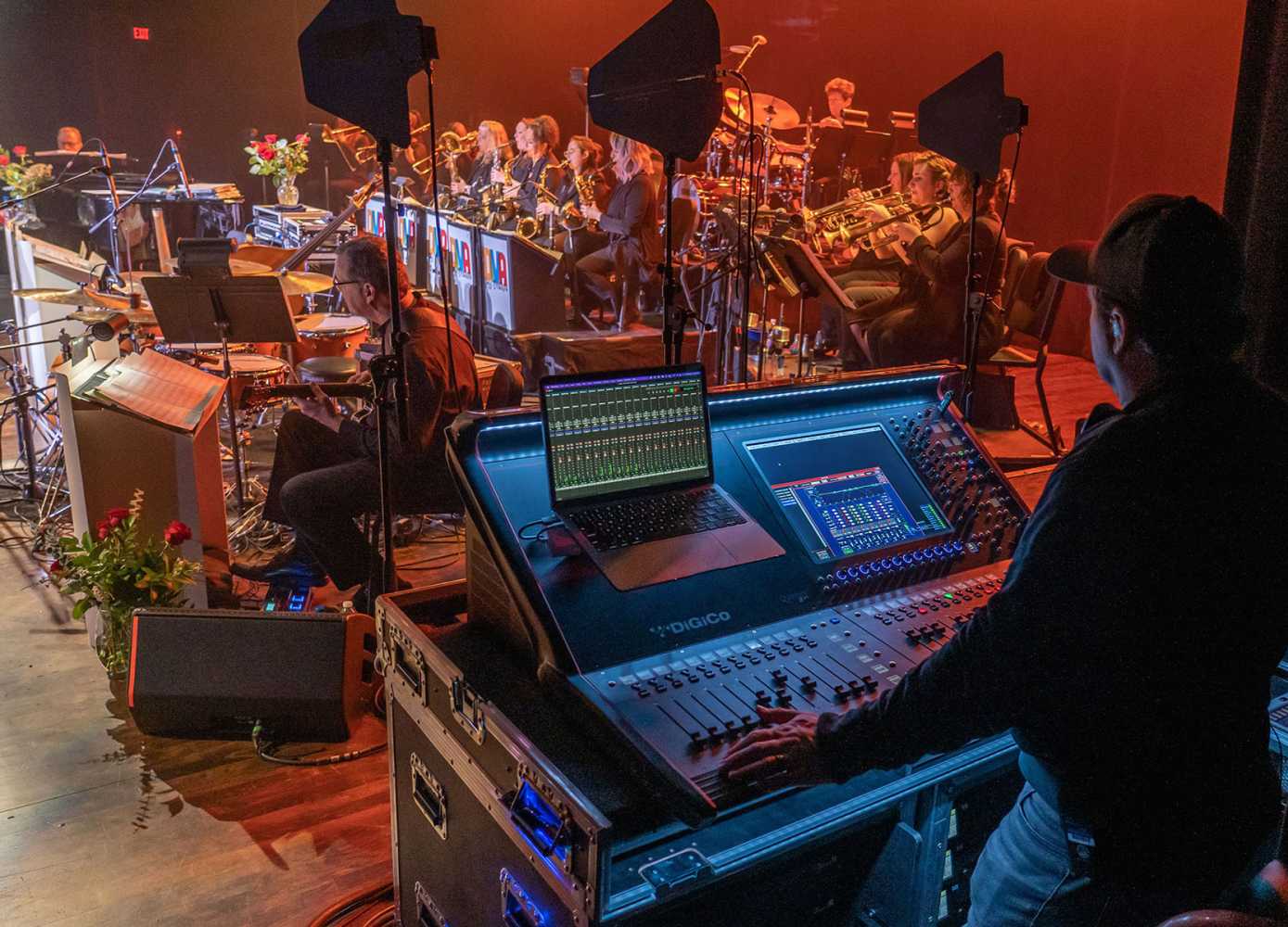Quantum in the mix for Manhattan Transfer finale
- Details

But as the foursome prepared for the initial dates their 50th Anniversary outing last August and September, circumstances compelled them to hit the road with the barest minimum of tech rehearsal. And when you’ll be traveling with a 24-piece big band - in this case the DIVA Jazz Orchestra who are backing The Manhattan Transfer - it’s quite a balancing act. That’s where the DiGiCo Quantum225 console came in. A pair of them were sent out on the tour, by Twin Cities-based live-production provider Slamhammer, for both front-of-house and monitor applications. In both cases, the Quantum225 brought with it a toolset that truly helped get this show on the road.
“It is a pretty big show - a big band with 24 pieces: 12 horns, two drum kits, and three basses,” says Andrew Lefkowits, the tour’s FOH engineer, who joined monitor engineer Chad Willis and Tyler Cerny, Slamhammer's system tech for the tour, on the road.
He first credits the Quantum225 for its ergonomic flexibility. “We didn’t have a lot of time to build a show before heading out and the layout flexibility of the Quantum console is just amazing. I could build my fader banks with exactly the right elements in each and place them where I could get at them quickly and confidently. On this show, I need all four vocal faders under my fingers at all times, because each individual singer will have moments where they jump out and then fall back into the harmonies.
“And I had to build three separate layers based on instrumentation: one for them with the Transfer Band, one for them with the Big Band, and one for when everyone was playing together. Having that layering capability was huge, especially since I literally started building the layers on the first soundcheck, three hours before doors.”
Quantum’s Mustard processing also played a part in getting everything up to speed quickly. “I’m using Mustard’s compression on the individual kick drums and the basses—two uprights and an electric—and then also applying it to the overall drum buss,” he explains. “The great thing about Mustard is that even though I didn’t have a lot of time to get too deeply into it, it sounded great as soon as I turned it on. On this tour, with everything having to come together quickly, that made a huge difference.”
Over in monitor world, Chad Willis, who like Lefkowits has been with the quartet for the better part of a decade, shares that the Virtual Soundcheck feature has been game-changing. He recalls the band hearing it onstage for the first time, and its fidelity was striking. “Now, I’m not sure how we ever lived without,” he says.
The console’s Virtual Soundcheck capability became critical night after night, allowing him to import the multitrack recording of a previous performance simply on USB-over-MADI into the desk to virtually run down the show at each stop on the tour. TMT’s monitoring is as complex as the stage setup: the vocalists have four front wedges and two side-fill wedges, in addition to the IEMs three of the members also use. The sax, trumpet, and trombone sections each have their own wedges, as do the bass and drummer, who also has his own mixer on stage. “It’s a lot of mixes but the 225 makes it easy to handle,” says Willis.
“For both Andrew and me, having the Quantum225 on the road has made a world of difference. It’s a great way to celebrate a 50th anniversary.”
















